- Retour accueil
- Vous êtes ici : Blog The Pyramids of the Cold
The Pyramids of the Cold
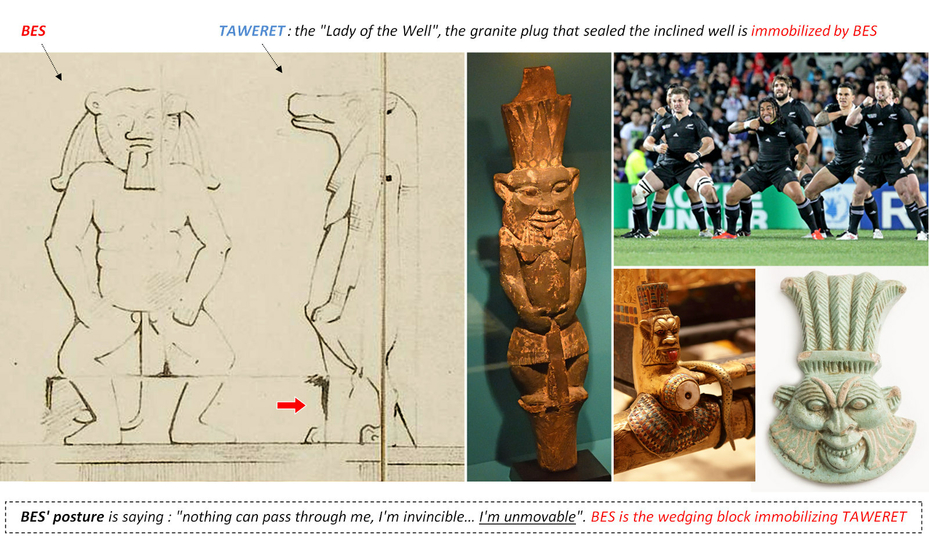
The Pyramids of the Cold Section 7 • Inclined Well : The Bes Wedging Block
Publié par Bruno Coursol dans The Pyramids of the Cold le 12/04/2022 à 20:11
The Pyramids of the Cold - Section 7 • The Inclined Well : the Bes Wedging Block In summary : the household protector Bes deity is a metaphoric representation of ...Lire la suite
The Pyramids of the Cold Section 8 • The Draining of the Inclined Well
Publié par Bruno Coursol dans The Pyramids of the Cold le 12/04/2022 à 20:11
Photograph of the cavity of Al-Ma'mun : "Great Pyramid Passages, Volume 1, by John and Morton Edgar, 1910" : https://archive.org/details/GreatPyramidPassagesVol11910Edition/page/n293/mode/thumb The Pyramids of the Cold - Section 8 • The ...Lire la suite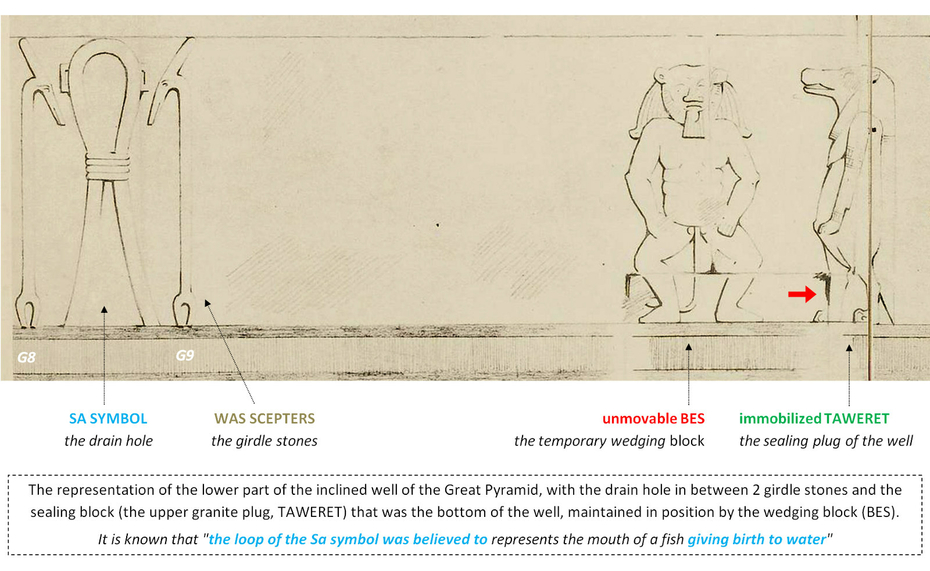
The Pyramids of the Cold Section 9 • The Was Scepter, Sa Symbol and Isis Knot
Publié par Bruno Coursol dans The Pyramids of the Cold le 12/04/2022 à 20:10
Hatshepsut’s birth scene, from Édouard Naville "The Temple of Deir el Bahari" (London, 1896), vol. 2, pl. 50. Image courtesy of the University Library Heidelberg : The Ebony shrine, northern ...Lire la suite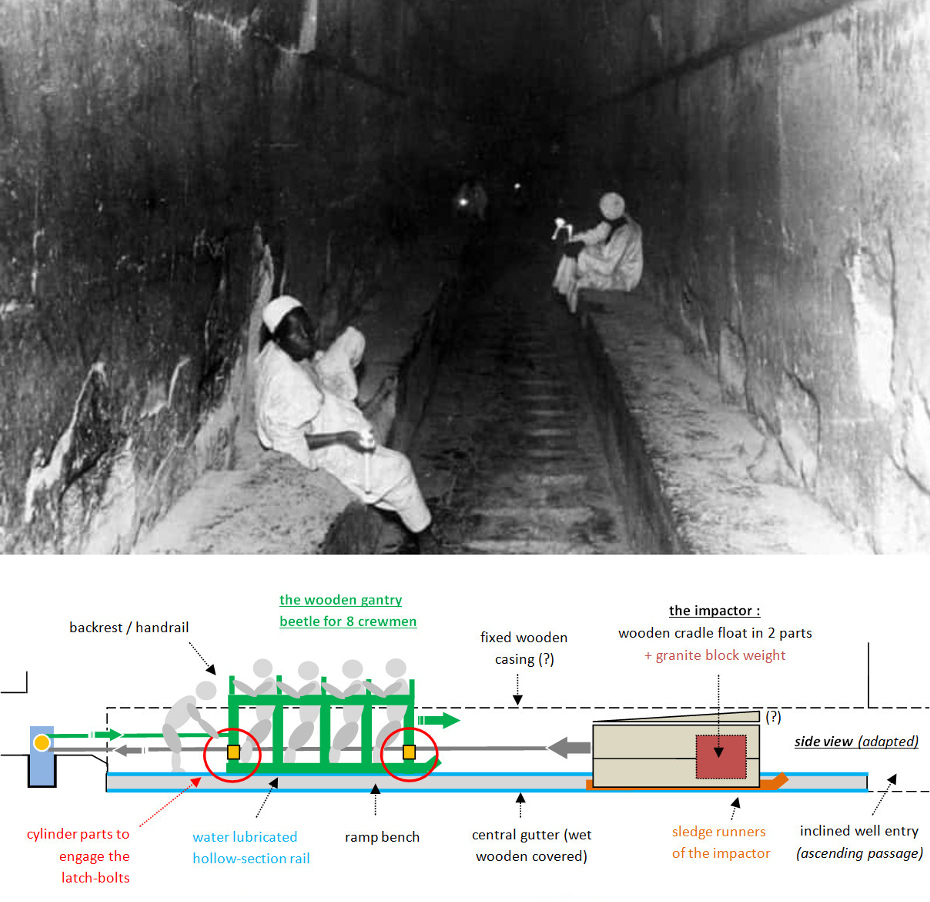
The Pyramids of the Cold Section 10 • The Impactor
Publié par Bruno Coursol dans The Pyramids of the Cold le 12/04/2022 à 20:09
The grand gallery of the Great Pyramid of Khufu at Giza. Please note on the central gutter, the presence of traces, possibly of ancient wooden caisson that, being covered with ...Lire la suite
The Pyramids of the Cold Section 11 • The Grand Gallery is the Hidden Hauling Cavern of the Underworld
Publié par Bruno Coursol dans The Pyramids of the Cold le 12/04/2022 à 20:09
The Pyramids of the Cold - Section 11 • The Grand Gallery is the Hidden Hauling Cavern of the Underworld In summary : the Underworld Amduat "Book of the Hidden ...Lire la suite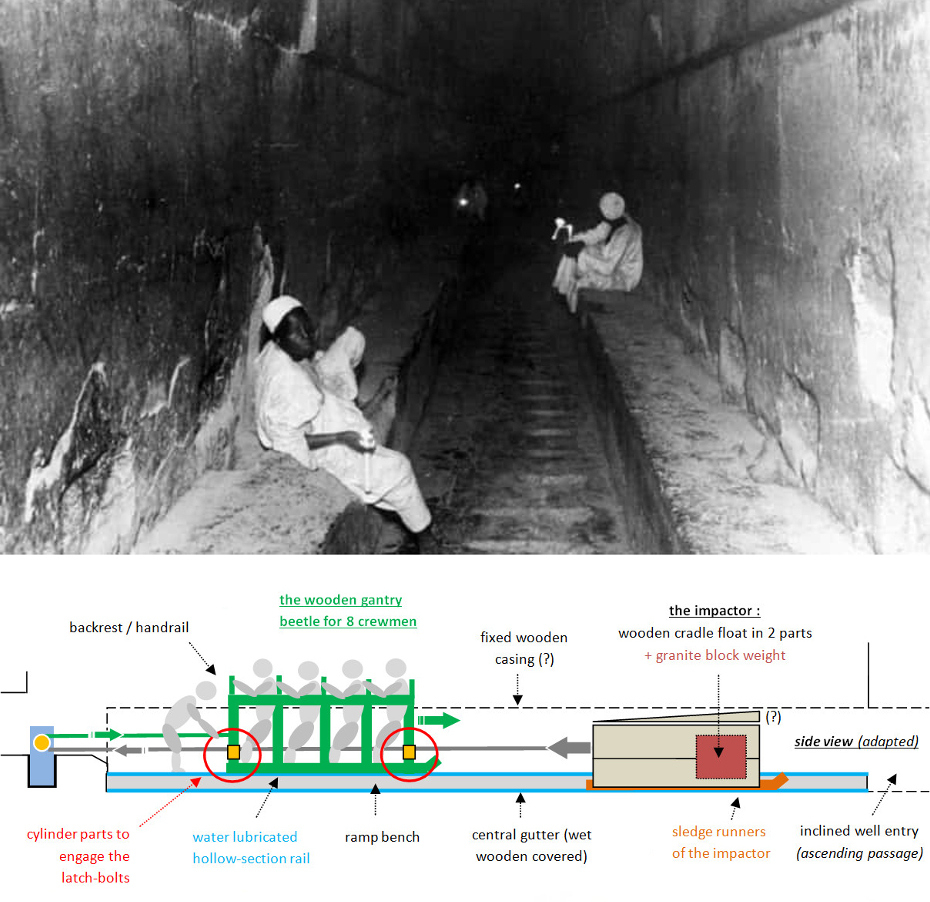
The Pyramids of the Cold Section 12 • The Hauling Beetle of the Grand Gallery
Publié par Bruno Coursol dans The Pyramids of the Cold le 12/04/2022 à 20:08
The Pyramids of the Cold - Section 12 • The Hauling Beetle of the Grand Gallery In summary : the wooden gantry that endlessly operated the impactor of the Great ...Lire la suite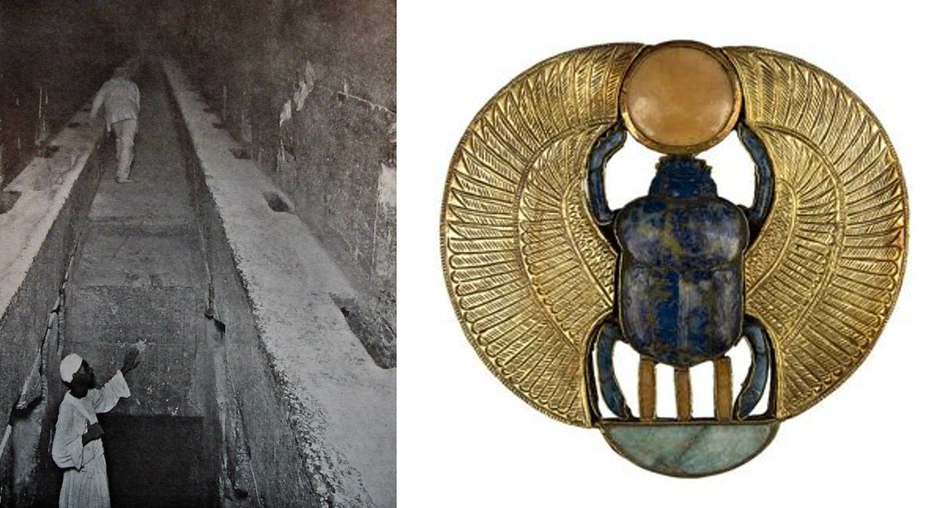
The Pyramids of the Cold Section 13 • The Scarab Amulets
Publié par Bruno Coursol dans The Pyramids of the Cold le 12/04/2022 à 20:06
Pectoral of Tutankhamun with the Winged Scarab, thanks to http://www.globalegyptianmuseum.org/detail.aspx?id=14836 The Pyramids of the Cold - Section 13 • The Scarab Amulets In summary : ancient Egyptian amulets in the ...Lire la suite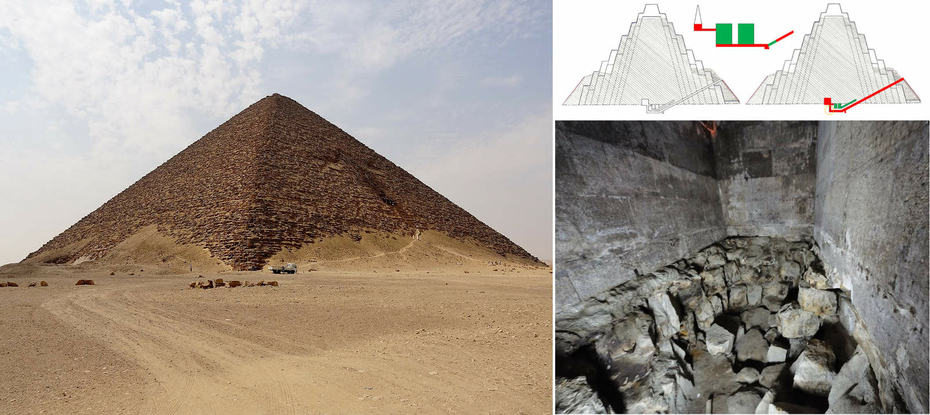
The Pyramids of the Cold Section 14 • Solvay process : the Red Pyramid
Publié par Bruno Coursol dans The Pyramids of the Cold le 12/04/2022 à 20:05
The Red Pyramid at Dashur (left) and the Meidum Pyramid (draws), built by pharaoh Sneferu. What is remarkable in the Meidum pyramid is that it shows a perfect split of ...Lire la suite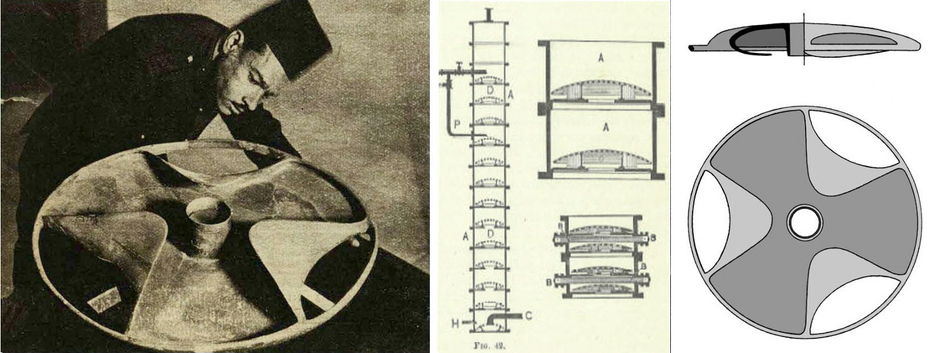
The Pyramids of the Cold Section 15 • the Solvay process for natron manufacturing : the Disc of Sabu
Publié par Bruno Coursol dans The Pyramids of the Cold le 12/04/2022 à 20:04
Disc of Sabu illustrations. In the center : schematic drawing of a 1800s European carbonation Solvay tower for Sodium Carbonate manufaturing, showing the segmentation layout in individual chamber units and ...Lire la suite
The Pyramids of the Cold Section 16 • the Solvay process : the cooling of the Eye of Horus
Publié par Bruno Coursol dans The Pyramids of the Cold le 12/04/2022 à 20:03
On these images, the element that Horus is holding, is the fog nozzle of the horizontal evaporative cooling passage of the Great Pyramid of Giza. The nozzle produced a fog ...Lire la suite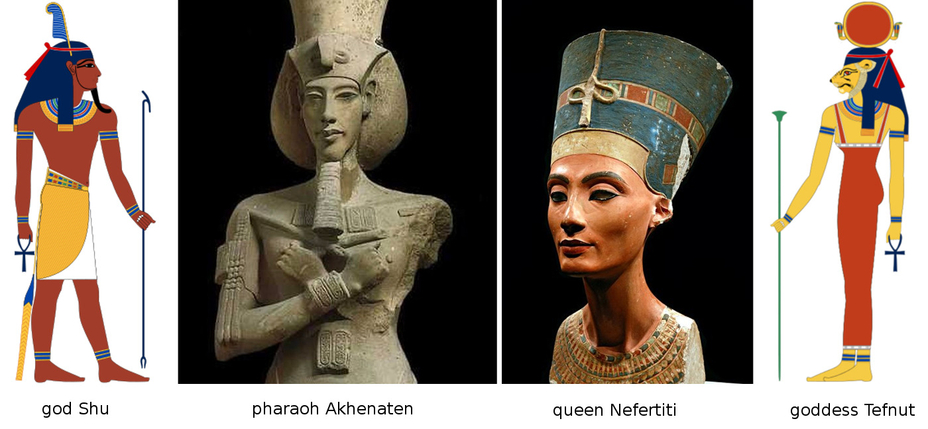
The Pyramids of the Cold Section 17 • the Ankh symbol and the changes made by Akhenaten and Nefertiti
Publié par Bruno Coursol dans The Pyramids of the Cold le 12/04/2022 à 20:00
Drawing of Shu by Jeff Dahl : https://en.wikipedia.org/wiki/Shu_(Egyptian_god)#/media/File:Shu_with_feather.svg King Akhenaten from tutincommon on flickr and bust of Queen Nefertiti from the Ägyptisches Museum Berlin collection, presently in the Neues Museum ...Lire la suite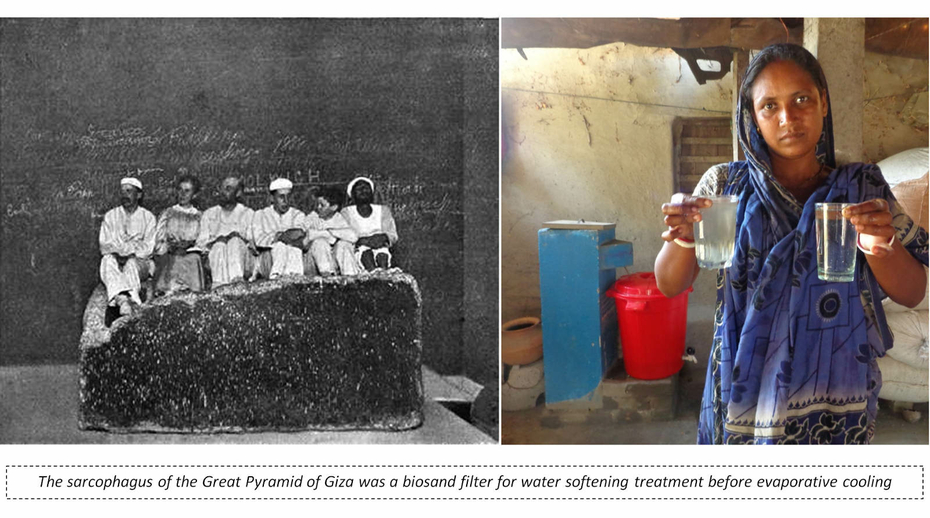
The Pyramids of the Cold Section 18 • the Sarcophagus
Publié par Bruno Coursol dans The Pyramids of the Cold le 12/04/2022 à 19:59
The coffer of the Great Pyramid of Khufu : "Great Pyramid Passages" Volume 1, Plate CXXV page 250, by John and Morton Edgar in 1910 : https://archive.org/details/GreatPyramidPassagesVol11910Edition/page/n259/mode/1up Production of drinking ...Lire la suite